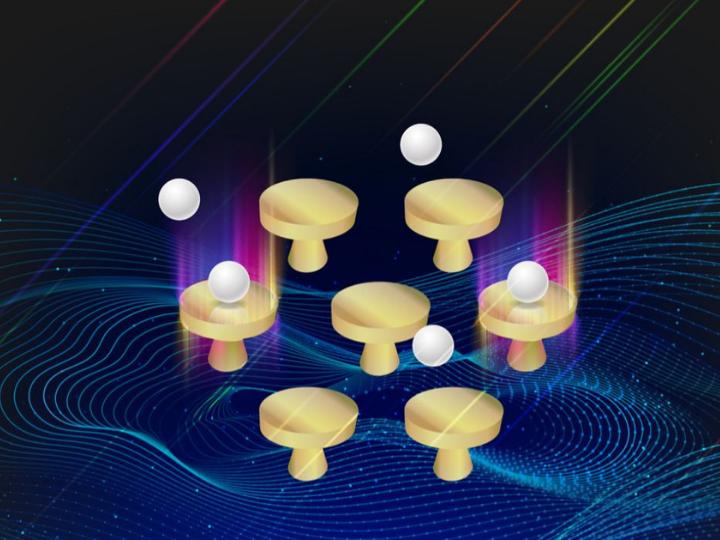Imaging technology offers advantages for diagnostics, other uses

Credit: University of Houston
Current state-of-the-art techniques have clear limitations when it comes to imaging the smallest nanoparticles, making it difficult for researchers to study viruses and other structures at the molecular level.
Scientists from the University of Houston and the University of Texas M.D. Anderson Cancer Center have reported in Nature Communications a new optical imaging technology for nanoscale objects, relying upon unscattered light to detect nanoparticles as small as 25 nanometers in diameter. The technology, known as PANORAMA, uses a glass slide covered with gold nanodiscs, allowing scientists to monitor changes in the transmission of light and determine the target’s characteristics.
PANORAMA takes its name from Plasmonic Nano-aperture Label-free Imaging (PlAsmonic NanO-apeRture lAbel-free iMAging), signifying the key characteristics of the technology. PANORAMA can be used to detect, count and determine the size of individual dielectric nanoparticles.
Wei-Chuan Shih, professor of electrical and computer engineering at UH and corresponding author for the paper, said the smallest transparent object a standard microscope can image is between 100 nanometers and 200 nanometers. That’s mainly because – in addition to being so small – they don’t reflect, absorb or “scatter” enough light, which could allow imaging systems to detect their presence.
Labeling is another commonly used technique; it requires researchers to know something about the particle they are studying – that a virus has a spike protein, for example – and engineer a way to tag that feature with fluorescent dye or some other method in order to more easily detect the particle.
“Otherwise, it will appear as invisible as a tiny dust particle under the microscope, because it’s too small to detect,” Shih said.
Another drawback? Labeling is only useful if researchers already know at least something about the particle they want to study.
“With PANORAMA, you don’t have to do the labeling,” Shih said. “You can view it directly because PANORAMA does not rely on detecting the scattered light from the nanoparticle.”
Instead, the system allows observers to detect a transparent target as small as 25 nanometers by monitoring light transmission through the gold nanodisc-covered glass slide. By monitoring changes in the light, they are able to detect the nearby nanoparticles. The optical imaging system is a standard bright-field microscope commonly found in any lab. There is no need for lasers or interferometers which are required in many other label-free imaging technologies.
“The size limit has not been reached, according to the data. We stopped at 25 nm nanoparticles simply because that is the smallest polystyrene nanoparticle on the market,” Shih said.
###
In addition to Shih, researchers involved in the project include Ph.D. students Nareg Ohannesian and Ibrahim Misbah, both with UH, and Dr. Steven H. Lin with the Department of Radiation Oncology at M.D. Anderson Cancer Center.
About the University of Houston
The University of Houston is a Carnegie-designated Tier One public research university recognized with a Phi Beta Kappa chapter for excellence in undergraduate education. UH serves the globally competitive Houston and Gulf Coast Region by providing world-class faculty, experiential learning and strategic industry partnerships. Located in the nation’s fourth-largest city and one of the most ethnically and culturally diverse regions in the country, UH is a federally designated Hispanic- and Asian-American-Serving institution with enrollment of more than 47,000 students.
Media Contact
Jeannie Kever
[email protected]
Original Source
https:/




